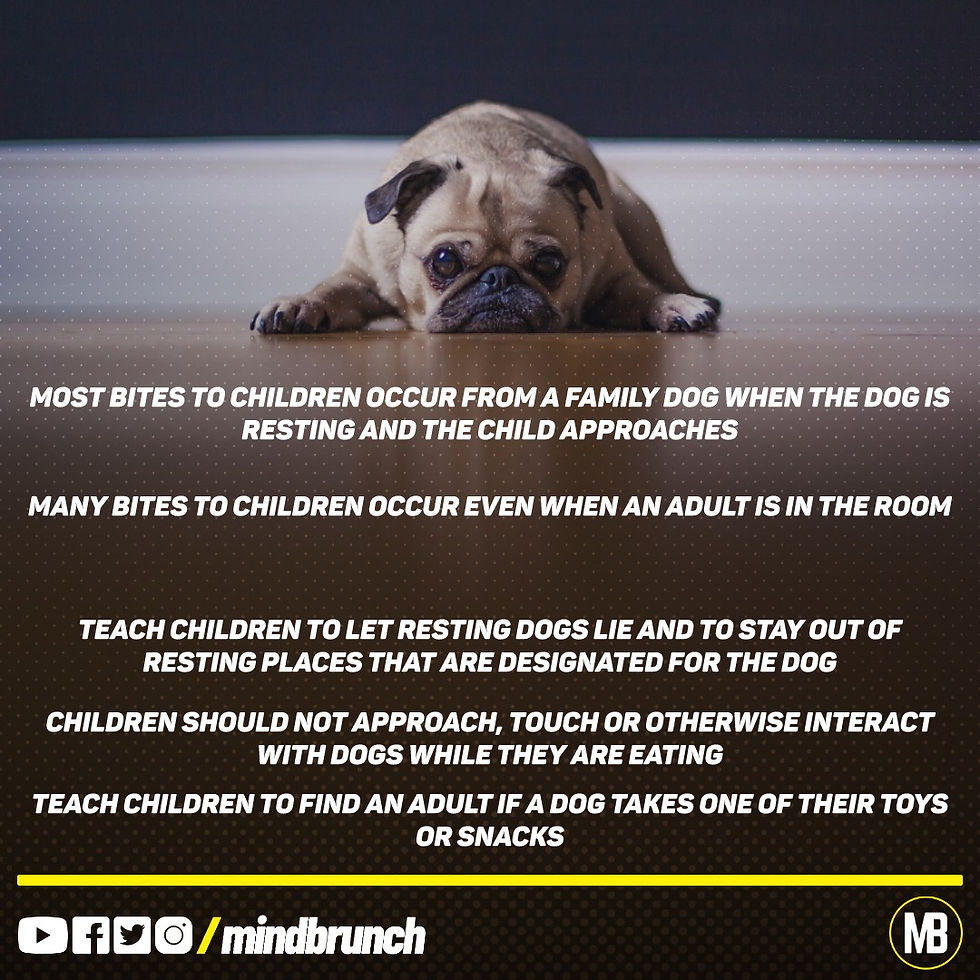These dog breeds and physical traits pose the highest risk of biting children
- Mind Brunch

- Jun 8, 2019
- 2 min read
Source: The Ohio State University Wexner Medical Center
Nearly five million people are bitten by dogs each year in the United States, and children are at a much higher risk than adults.
Dog bites can cause significant psychological and physical damage, and bites to the face often require reconstructive surgery to repair injuries ranging from nerve damage to tissue loss.

While certain breeds are known to bite more frequently or cause more severe injuries, a new study finds the breed was unknown in about 60 percent of dog bite cases
Most bites to children occur from a family dog when the dog is resting and the child approaches. Try to provide and encourage resting places away from where children run and play.
Many bites to children occur even when an adult is in the room. If you can't devote your attention to the interactions between the dog and child, it may be best to have a physical barrier between them, such as a baby gate or crate for the dog. This is especially important for toddlers whose behaviors may be more erratic, unpredictable or frightening to a dog.
Teach children to let resting dogs lie and to stay out of dog crates, beds and other resting places that are designated for the dog. If the dog's favorite spot is on the couch, put a towel or blanket down to clearly delineate the dog space versus child space.
Children should not approach, touch or otherwise interact with dogs while they are eating. Provide quiet areas for dogs to eat away from areas where children run and play. Rawhides and other flavored chews should only be given when dogs are separated from child play areas.
Teach children to find an adult if a dog takes one of their toys or snacks. Children should never attempt to retrieve these items themselves.








Comments